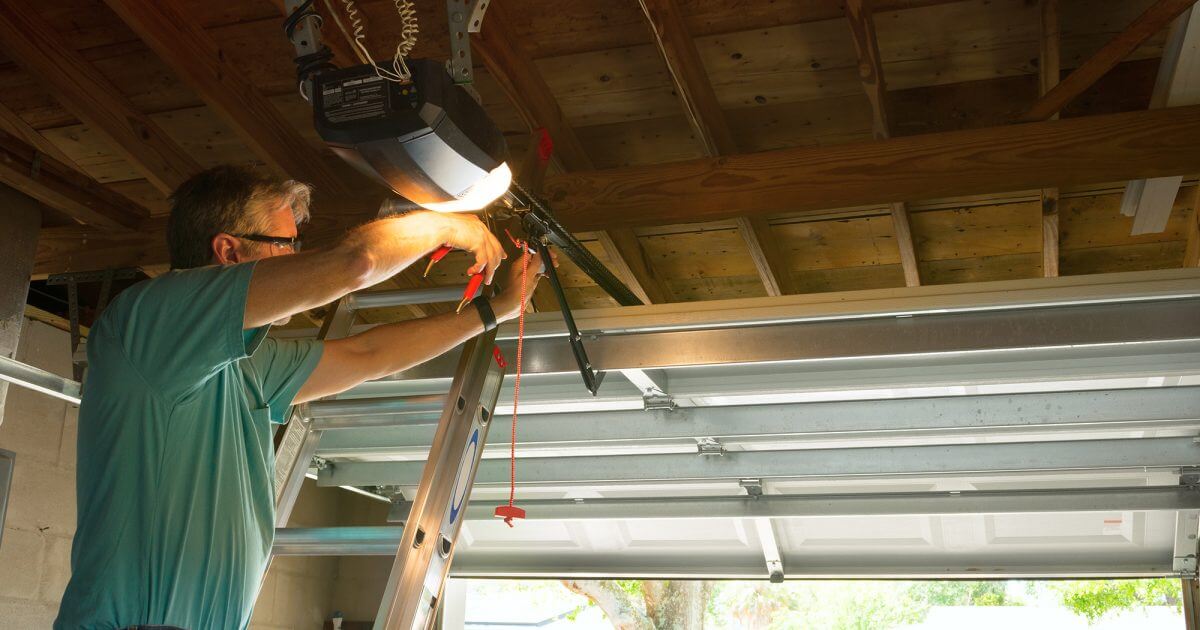Navigating the realm of garage door repair Mississauga opens the door to various aspects of maintenance, with a crucial focus on achieving optimal balance. A balanced garage door not only ensures smooth operation but also contributes to the longevity of the entire system. In this detailed guide, we’ll explore the intricacies of balancing a garage door yourself, empowering homeowners to take control of this essential aspect of home maintenance.
Understanding the Importance of Garage Door Balance
The balance of a garage door is a critical factor that influences its performance and lifespan. An imbalanced door can strain the opener, lead to premature wear and tear, and compromise the safety of the entire system. Regularly addressing garage door repair needs, especially those related to balance, is key to ensuring a functional and secure garage door.
Common Causes of Garage Door Imbalance
| Cause | Description |
|---|---|
| Spring Tension Issues | Unequal tension in extension or torsion springs |
| Worn or Damaged Rollers | Rollers that no longer glide smoothly along the tracks |
| Misaligned Tracks | Tracks that are out of alignment or have bends |
| Lubrication Problems | Lack of lubrication on moving parts |
| Imbalanced Door Sections | Uneven weight distribution in the door panels |
| Loose or Broken Cables | Cables that are damaged or not properly secured |
| Opener Malfunctions | Issues with the garage door opener’s sensors or settings |
DIY Garage Door Balancing: A Step-by-Step Guide
Note: Before attempting to balance your garage door, ensure that the door is in good working condition, and all necessary safety precautions are taken. If uncertain, seek professional assistance.
- Safety First:
- Disconnect the garage door opener to prevent any unintentional movement.
- Use locking pliers to secure the door in the open position, providing a stable and safe working environment.
- Inspect the Springs:
- Visually inspect both extension and torsion springs for signs of wear, damage, or rust.
- Ensure that the springs are under the same amount of tension.
- Adjust Torsion Spring Tension:
- To balance a door with torsion springs, use winding bars to adjust the tension.
- Consult the door’s manual or seek professional guidance for proper adjustment procedures.
- Balance Extension Springs:
- For doors with extension springs, adjust the tension by moving the spring hook to a different hole.
- Ensure equal tension on both sides.
- Examine Rollers:
- Check all rollers for wear and tear.
- Replace any damaged or worn rollers and lubricate the remaining ones with a silicone-based lubricant.
- Inspect and Align Tracks:
- Examine the garage door tracks for misalignment, bends, or obstacles.
- Use a level to ensure that the tracks are perfectly aligned and adjust if necessary.
- Lubricate Moving Parts:
- Apply a generous amount of lubricant to all moving parts, including rollers, hinges, and springs.
- Lubrication reduces friction and ensures smoother operation.
- Check Door Sections:
- Inspect the door panels for any signs of damage or warping.
- Ensure that the weight is evenly distributed among the sections.
- Tighten Loose Hardware:
- Check and tighten all bolts, nuts, and screws on the garage door and its hardware.
- Loose components can contribute to imbalance.
- Examine Cables:
- Inspect the lifting cables for any fraying, damage, or slack.
- Replace damaged cables and ensure that they are properly tensioned.
- Test the Balance:
- Manually operate the garage door through its full range of motion.
- The door should stay in place when partially open and close smoothly without resistance.
Additional Tips for Effective Garage Door Balancing
- Regular Maintenance Schedule:
- Establish a routine maintenance schedule for your garage door, including balance checks.
- Regular inspections can catch potential issues before they escalate.
- Professional Inspection:
- Schedule professional inspections annually or as needed.
- Experts can identify issues that may not be apparent during DIY checks.
- Weight Distribution Awareness:
- Be mindful of the weight distribution in your garage.
- Avoid storing heavy items on one side, as this can impact door balance.
- Educate Yourself on Opener Settings:
- Familiarize yourself with the settings and features of your garage door opener.
- Proper adjustment can contribute to the overall door balance.
- Consider Upgrading Rollers:
- Upgrading to nylon or steel rollers can improve smoothness and reduce friction.
- Consult your door’s specifications for compatibility.
- Weather Stripping Inspection:
- Inspect and replace weather stripping as needed.
- Weather stripping helps maintain a proper seal and contributes to overall balance.
- Maintain a Clean Environment:
- Keep the garage clean and free of debris.
- Debris can obstruct the tracks and contribute to imbalance.
- Weather Conditions Impact:
- Be aware that extreme weather conditions can affect garage door balance.
- Adjustments may be needed seasonally.
A Harmonious and Functional Garage Door
Balancing a garage door is a fundamental aspect of maintenance that directly influences its performance and longevity. By following this detailed DIY guide and incorporating additional tips, homeowners can take charge of their garage door repair needs, ensuring a harmonious and functional entryway to their homes. Regular attention to balance not only enhances the safety and efficiency of the garage door but also contributes to the overall well-being of the entire home.
Andres Walsh
Related posts
Stay connected
Today's pick
- Things to Remember While Designing Your Custom Modular Kitchen in GurgaonGurgaon now known as Gurugram is the second largest city in the state of Haryana and is a reflectiossn of an ideal modern city with futuristic goals. Witnessing rapid urbanization, it has also emerged as a hub for contemporary homes, with homeowners seeking innovative and... The post Things to Remember While Designing Your Custom Modular […]

